After some encouraging economic data last month, here’s a timeline of what’s occured in the last 2 weeks:
– Silvergate Bank, one of the few US banks to work with many companies in the Crypto industry, shut down on March 8.
– Silicon Valley Bank, the 16th biggest bank in the US, collapsed on March 10.
– Regulators took over Signature Bank on March 12. Signature was a long-standing bank that had just begun to work with crypto clients. They helped to facilitate a sale of Signature to New York Community Bancorp on Sunday.
– First Republic Bank received a $30 billion dollar lifeline from the largest banks in the US to attempt to support it from collapse.
– Credit Suisse, considered one of the 30 financial institutions that are “globally systemically important”, was bought by UBS on March 19 as it was on the brink of failure.
How did this happen?
Not one thing in particular – a perfect storm of rising interest rates, weak regulatory oversight (or deregulation depending on who you ask), risky portfolio management, and some idiosyncratic issues specific to each bank. Now, Credit Suisse is technically an investment bank and has been rumored to be going out of business since the great financial crisis in 2008 (their nickname on the street was Debit Suisse) so let’s set them aside for now.
It could be argued that Silvergate would have collapsed on its own as the doomed crypto company FTX was one if its major customers. But it’s hard to believe the others would have gone down if not for what they all had in common – a portfolio of underwater investments and depositors that all got scared at once.
Banks make money by taking your deposits and either lending them out or earning an interest rate by purchasing bonds for their portfolios. It’s good business when it’s working. As long as you have enough cash on hand to pay out your depositors when they need money you can earn extra spread on your loans and investments. Most banks own ultra-safe government and mortgage bonds in their portfolios which they were likely planning to hold to maturity. Here is Silicon Valley Bank’s balance sheet at the end of 2022 (where they received a clean bill of health by auditors).

Those “hold to maturity securities” listed above? Many are now showing big losses as interest rates have risen throughout the last year. This caused stress on the balance sheet of Silicon Valley Bank and many of the other regional banks around the country.

“Outward signs of trouble emerged on Wednesday, March 8th when SVB surprised investors with news that the bank needed to raise more than $2 billion to shore up their balance sheet.
The reaction from prominent venture capitalists was not positive, with Coatue Management, Union Square Ventures, and Peter Thiel’s Founders Fund moving to limit exposure to the 40-year-old bank. The influence of these firms is believed to have added fuel to the fire, and a bank run ensued.
Also influencing decision making was the fact that SVB had the highest percentage of uninsured domestic deposits of all big banks. These totaled nearly $152 billion, or about 97% of all deposits.
By the end of the day, consumers had tried to withdraw $42 billion in deposits.”
The Shocking Collapse of Silicon Valley Bank
This was a wake-up call for everyone with uninsured deposits (over $250,000) at regional banks across the country. The stock prices of many have cratered since then.
Will other banks fail?
It’s hard to say. The FDIC has stepped in to guarantee not only the $250,000 in deposits that all bank account holders are entitled to, but all uninsured deposits over $250,000 of the banks that failed as well. This seems to be an implicit guarantee that all depositors will be made whole if other banks fail (although no blanket guarantee has been made). They also created programs to help banks with liquidity needs make sure they meet customer demands. But that might not be enough for nervous depositors.
That being said, I worry about smaller banks with large uninsured depositors coming under pressure. If you were the CFO of a small company that needs to keep a large amount of liquidity to meet payroll every two weeks, why would you take the risk of having any of your deposits be uninsured? There are banks deemed Too Big to Fail who will be the recipients of those deposits. This seems to already be happening.
Is my money in the bank safe? What about my investment account?
If you have money in a bank account, you are insured up to $250,000 in case of bank failure by the FDIC (and sometimes more than that depending on the account types you have). The FDIC has a good track record of returning insured customer funds within a few days of a bank closing. You can review FDIC coverage rules here.
Your investment account is considered a different account type than a bank. Brokerage firms are covered by 2 layers of protection:
SPIC insurance covers up to $500,000 of protection in case of fraud or failure of a brokerage firm.
The SEC mandates brokers follow the Consumer Protection Rule. This requires brokerage firms to segregate your assets and are not available to creditors. In other words, your investments are your assets, the brokerage firm must hold them separately on your behalf and cannot access them finance any part of their business.
You can read about the different types of protection you get on your investments from our custodian, Charles Schwab, here.
Even though most of us have under $250,000 at the bank and are well protected with our investment accounts, it’s probably a good time to review your coverage in light of what’s going on.
Is this 2008 again? What will happen to the markets and economy?
As mentioned above, we aren’t dealing with the toxic mortgage derivatives of 2008 that plagued the balance sheets of many banks. That said, regional banks represent a large percentage of loans to small businesses and consumers for things like car loans, mortgages, and business lines of credit. If they pull back on lending, we might really accelerate the economic slowdown that many have predicted.
Some have expressed some excitement that this might finally mark the end of the rate hiking cycle by the Federal Reserve. The futures market is already pricing in 1% of rate CUTS this year starting in May.
Charlie Bilello
While this might sound like good news, it really isn’t. The fed only cuts rates this quickly when something has gone wrong in the economy (think the response to COVID or 2008). These interest rate bets change often (and are often incorrect), so we’ll continue to monitor.
While we don’t know how this bank situation will play out, we are watching closely. If you have any questions about your insurance coverage, investments, or wealth plan, please do not hesitate to schedule a call with us.




